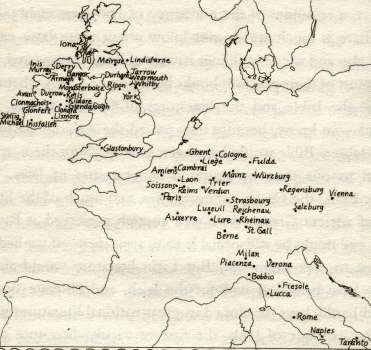Genealogy Menu
From Columba (Latin 'dove') and Columbanus ('little dove') to Columhán, Columáin, Colmáin (Kole-mawn) - the Irish for Columba and Columbanus and the Celtic
Latin origin of the surname Coleman.
|
St Columcille (Columba) was the greatest Irish figure after St Patrick. He was born and baptised Crimthann (Fox) at Gartan, County Donegal, in 521. He was prince of Clan Conaill of Tir-Conaill and direct descendant of Niall of the Nine Hostages whose son Conall had founded this dynasty. It was during his days of study under St. Finian of Moville (Co. Down) that he was given the monastic nickname of Columcille or Dove of the Church, Columba being the Latin for dove, and Cille the Irish for Church.
|
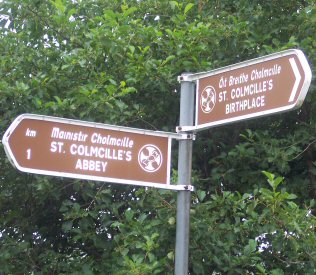 |
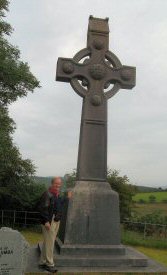 |
 |
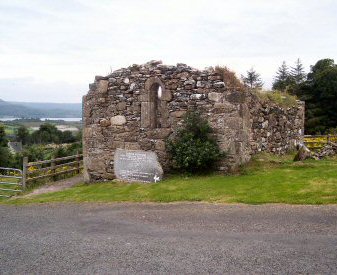 |
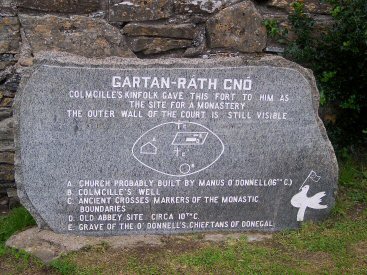 |
 |
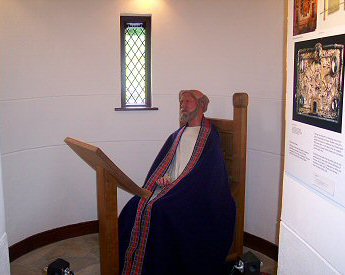 |
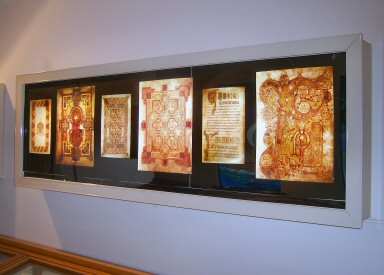 |
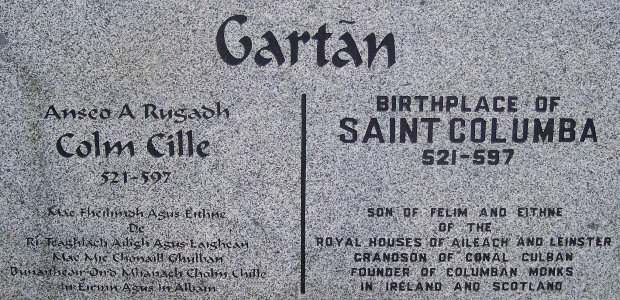 |
|
As Irish monasteries had quickly attracted thousands of foreign students, the Irish monastic tradition began to spread beyond Ireland and, as the learned Thomas Cahill puts it in 'How the Irish Saved Civilisation', "Columcille's reputation spread like wildfire". He was mostly responsible for reconnecting illiterate Europe to its literate past 'by way of scribal Ireland'. The other Columba, Columbanus*, following in the steps of the great Columcille, left the monastic community of Bangor for the continent in 590, just seven years before Columcille's death. Historians are still assessing his tremendous influence there. Fursa went to East Anglia (England) and Gaul around 633 to establish Irish foundations of learning. In 635 King Oswald of Northumbria sent to Iona for a missionary to convert his people to Christianity. Aiden was chosen for the task and with his twelve followers or fellow monks established a monastery at Lindisfarne , near the King's castle at Bamburg. Lindisfarne flourished under Aiden and Finian. In 660 AD Colmáin* (Colman) who was a member of Uí Fiachrach Mauide of north Connacht and who had received his education at Iona was appointed Bishop-Abbot of Lindisfarne. *Click here for more on the Irish Monastic Tradition |
|
The most important centres of Irish Christian influence in Europe
|
|
Ireland's 'golden age' began in the sixth century and lasted well into the ninth century. Ireland was known as an 'Island of Saints and Scholars' whose wandering missionaries and teachers were a beacon for the rest of Europe when the continental countries were said to languish in their 'Dark Ages'. The Irish carried the torch of learning to Europe during these centuries. The documentary evidence places the scholars of Irish monastic schools at an academic pinnacle, and there seems to be little doubt of the contributions made by the scribes and monks in preserving the West's written heritage. The flowering of literature and learning in early Ireland is firmly linked with the rise of Christian monastic schools which came into prominence in the latter half of the sixth century. From these monastic centres Irish missionaries were to establish religious centres of learning in other parts of Europe. |
|
The fact that there are thousands of references in ancient manuscripts and books with over a thousand in the "Annals of the Four Masters" alone to monks, abbots, bishops, clans and kings with the name Columhán, Columáin, Colmáin (Kol-mawn) - the Irish for the latin Columba (Dove) and Columbanus (little dove) - and also that there are well over a hundred Irish saints of this name attest to the popularity of the two Columbas. While this symbol of peace was a very popular choice as a religious name among those turning to the gentler ways of the church from the earlier Irish warrior society, it was also adopted as a clan name by cousins of Columcille in both the Southern Uí Néill (Middle Kingdoms) and Uí Fiachrach (Connacht) Dynasties. The Coleman Family on this web site are descended from the Uí Fiachrach Coleman Clan. |
|
As a matter of interest, another Irishman, St. Colman a prince of Clan Coleman is patron saint of lower Austria. He is burried in Melk Abbey which is about 110 kilometres from Vienna in the Danube Valley.This famous Benedictine abbey of Melk is one of Europe´s most splendid examples of Baroque architecture. A special courtyard is dedicated to his memory and this is what the Melk Abbey web site www.stiftmelk.at has written in its article entitled the Coloman Courtyard: |
|
"Coloman, according to legend a king’s son from Ireland on a pilgrimage to Jerusalem, was martyred in 1012 in Stockerau, near Vienna. In this dangerous border area he was suspected of espionage. He came under suspicion because of his strange language and clothing, and was then imprisoned, tortured, and finally hanged from a dead elder tree. |
|
|
"The miracles that then occurred soon caused the local population to venerate Coloman. Heinrich I become aware of Coloman through these wonders, and had his corpse brought to Melk in 1014. A ceremonial funeral was held on October 13, 1014 in the St. Peter’s church on the castle cliffs in Melk. |
|
|
"One reason for Coloman’s translation to Melk may have been a desire on the part of the Babenbergs to enjoy the mercy of the saint in life and death. Having a saint in their castle was seen as a sort of divine confirmation of the rule conferred upon them by the emperor, and was intended to promote the inner stability of their realm. Next to Coloman’s grave the Babenbergs could now establish a burial site worthy of them. The existence of this burial site was probably also one reason why Leopold II made a Benedictine monastery out of the Melk castle in 1089. The Benedictines in Melk have kept the memory of St. Coloman alive and he is venerated to this day. Numerous churches in Austria, Bavaria, Swabia, and elsewhere are dedicated to St. Coloman. Coloman was also Austria’s first patron saint. The Babenberg margrave St. Leopold III was not made patron saint until 1663. St. Coloman is still the patron saint of the town and monastery of Melk. Every year in Melk monastery a mass is celebrated on October 13th to honor St. Coloman. Since 1451, his saint day has been celebrated on this day in the town with a big fair. In our times, where listening to each other has become increasingly difficult, he can be seen as a contemporary saint, as he, stranger in a strange land, was not understood. Whoever is different, looks or speaks differently, makes himself suspicious, causes fear, and can easily become the victim of prejudice." |
 |
|
This is a picture of that part of the abbey seen from the entrance to the town of Melk on the south bank of the Danube. Below is a photo of the left altar of the transept. On it is a sarcophagus that contains the remains of St Coloman. The statue shows the saint as a pilgrim, his prayers ascending to Heaven. |
The abbey is very large. Take a few minutes to check it out at www.stiftmelk.at and perhaps do a virtual tour. The magnificent church, the library, the school and museum are worthy of a visit. These photos of the abbey are taken from the carpark. In the foreground are Patricia Coleman from Sydney and Kerry Tattersall from Vienna and below are Martin and Patricia. |
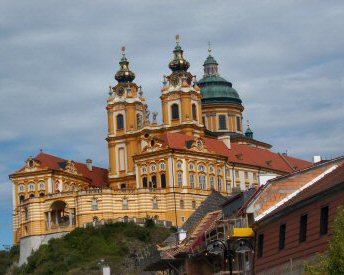 |
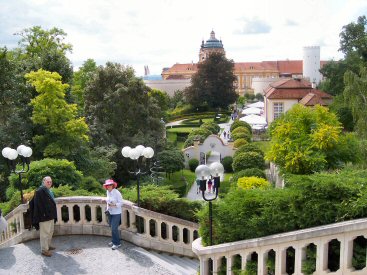 |
|
The Altar of St Coloman
|
Martin & Patricia Coleman at Melk 2004
|
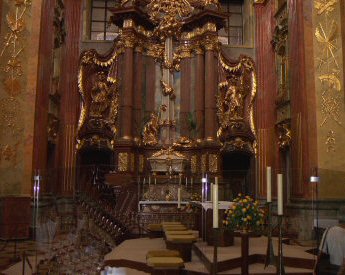 |
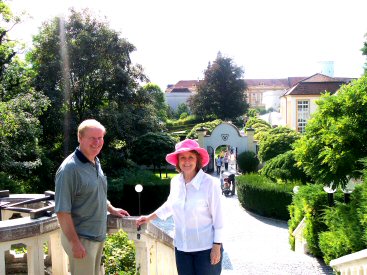 |
 Clan Coleman
Clan Coleman
